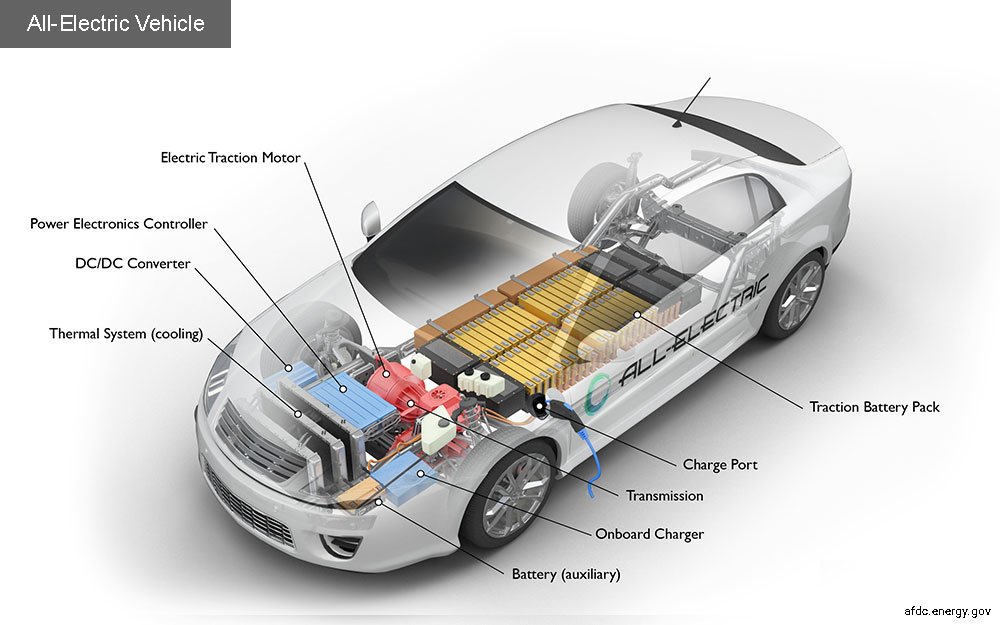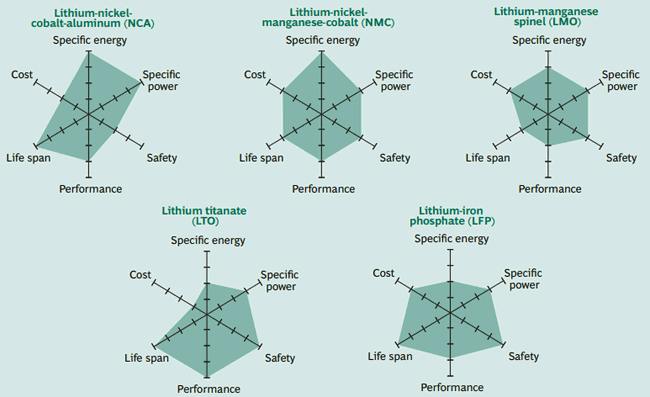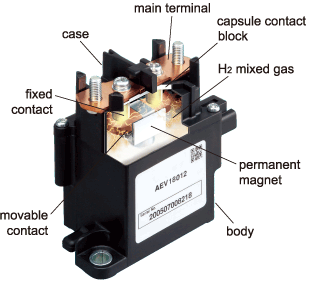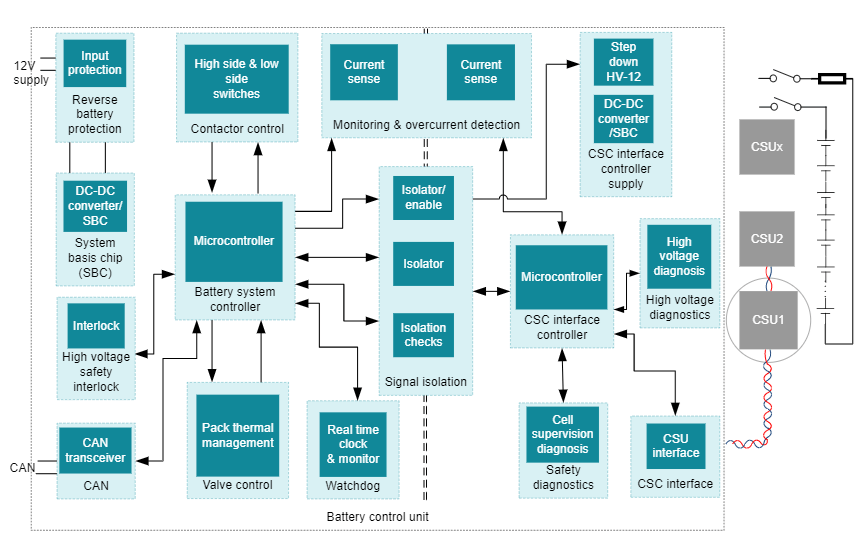Electric Vehicle has many components but at the heart of the Electric Vehicle is the Electric Vehicle Batteries.
In this guide, you’ll get to know the complete details about Electric Vehicle Batteries.
Let’s start,

The important piece of an Electric Vehicle Powertrain is the Battery Pack.
The Battery pack must satisfy the demands of the Electric Vehicle Motor and the Electric Vehicle Charging System. With Electric vehicles becoming popular, Electric Vehicle Battery technology has come a long way.
What does an Electric Vehicle Battery Pack consists of?
Electric Vehicle Battery Pack consists of many small cells combined in series/parallel configuration to achieve the desired capacity in the final pack.
Usually, a pack consists of blocks of 20-30 parallel cells in series.

Usually, electric cars use lithium-ion batteries, and these have only 3.7V per cell, so multiple Lithium batteries are combined into a Battery pack to get the desired voltage.
Common nominal pack voltages in electric vehicles could be 300 V – 800 V.
Common battery capacity for electric vehicles ranges from 30 to 100 kWh or more.
Lithium-ion Battery Overview
As informed earlier most of the Electric Vehicles use Lithium-ion Batteries. These batteries provide lightweight, high energy density power. This makes Lithium-ion Batteries for electric cars the first preference.
Lithium-ion Batteries contain less toxic metals than other types of batteries which may contain lead or cadmium.
Below are the most common types of Lithium-ion Batteries.
- Lithium-nickel manganese cobalt (NMC)
- Lithium nickel cobalt Aluminum (NCA)
- Lithium-manganese Spinel (LMO)
- Lithium Titanate (LTO)
- Lithium-iron Phosphate (LFP)

As shown above, each of the Lithium Batteries has its advantages in terms of cost, Specific Energy, Power, Safety, Performance, and Life span.
Because of its low-cost Lithium nickel Cobalt Aluminium is most widely used.
Electrical Vehicle Batteries Basics
Voltage Rating
Voltage rating or nominal voltage is the voltage that a battery can provide across its terminals.
Lithium batteries are of 3.7V but that does not mean lithium batteries provide 3.7V across its terminals all the time. This also depends on the capacity of the battery.
Ah (Ampere hour) Rating
Ah is the capacity of the battery. For example, a 1 Ah battery can give 1A for one hour.
C-Rating
This refers to the maximum current that can be drawn from a battery.
Specific Energy
It is the power that a battery can provide per unit mass of the battery.
The weight of the battery pack is very important in an Electric vehicle as this is the major contributor to the overall weight of the vehicle. so the specific energy of a battery should be as high as possible.
Energy Density
It is the power that we can get per unit volume of the battery.
Cut-off Voltage
It is the minimum voltage below which a battery should not be used. For example, if a Battery Cut-off Voltage is 2V then it should not be connected to a load when the voltage is less than 2V.
Energy Watt-hour (kWh)
EV Battery Packs are rated in kWh (Kilo-Watt hour). It is similar to Ah but here both voltage and current are considered.
Maximum Charge Voltage
This the maximum voltage that battery can reach.
The above details will be mentioned in the electric vehicle battery specifications.
Electrical Vehicle Batteries Safety
As batteries represent a major portion of an EV and the voltages are very high, the safety of EV Batteries is very important. Electric vehicle battery manufacturers do put a lot of focus on EV Batteries Safety.

Safety by design (Fuses and contactors)
To safeguard the batteries fuses and contactors are used. Fuses are placed inside the battery pack. Contactors (high-current, sealed relays) connect fuses to the battery itself. These shut off current if a short circuit is detected in the car or the battery.

Side Cover Sealing
EV batteries can withstand an external shock. Side Cover Sealing is important as side-impact collisions can severely damage the batteries than front or rear impact collisions. Side Cover Sealings are built with ceramic-coated separators to improve strength.
EV Battery Safety Testing
Below are some of the Safety Tests that EV batteries undergo
- Crash Safety – Rear impact test for testing battery explosion safety
- Water Tightness – Test to ensure water does not enter battery pack
- Submersion Test – Batteries are immersed in saltwater
- Combustion Test – In this test batteries are exposed to fire
Preventing Electric Shocks
One of the major concerns is about electrocution while charging the battery. So various mechanisms are in place to prevent shocks while charging even in rain.
- A drain hole in the charging port dispels moisture inflow preventing electric shock.
- After connecting the charging gun to the port, a seal prevents any further inflow of liquid.
- The button on the charging gun can cease charging immediately.
- Current flows only after the connection between the vehicle and the charger is complete.
Battery Management Systems (BMS)
Battery Management System is an Electronic Control Unit that monitors and controls all aspects of Electric Vehicle Batteries.

Some of the important tasks of BMS are as below, not all BMS have all the below features, the basic function includes battery function and showing state-of-charge (SoC).
- Monitoring temperature and voltage of cells
- Estimate state-of-function in the form of state-of-charge and state-of-health (capacity)
- Give caution regarding high temperature, cell imbalance
- overcharge protection by limiting power input and output
- Control the battery charging profile
- Caution end-of-life when the capacity falls below a set threshold.
Conclusion,
Hope you got an overview of Electric Vehicle Batteries.
Please let us know in the comment below if you need any further information on Electric Vehicle Batteries.




